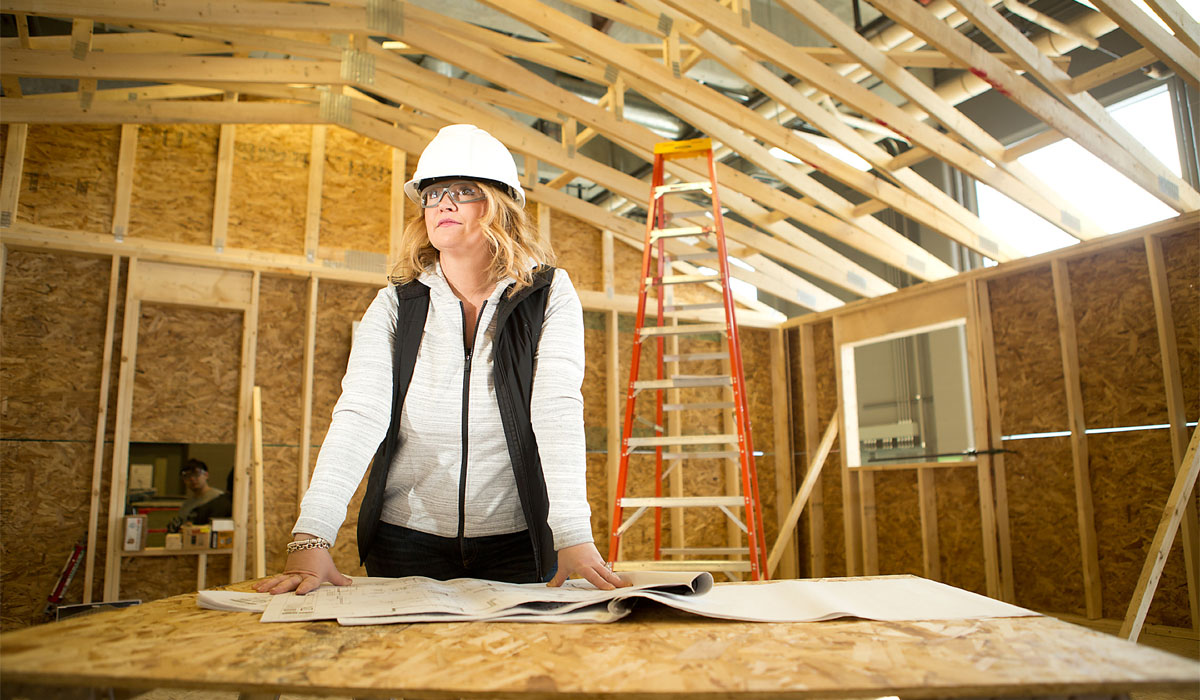Overview
Canada's commitment to making homes and buildings more energy efficient will continue to grow in coming years to meet national net-zero energy and emissions goals. This has increased opportunities for the residential construction industry to meet current and emerging energy performance standards and building code requirements.
This certificate program will introduce you to residential design and construction principles, methods and technologies for building high-performance homes.
By taking this certificate program, you'll develop leading industry knowledge of:
- building science principles
- metrics for verifying performance
- prevailing rating and verification systems.
This certificate program is ideal for professionals in the residential construction industry, including architects, designers, engineers, site managers and trades. It will build upon your home design and construction knowledge to meet current provincial and national building code energy requirements.
Upon successful completion of this certificate program, you'll be able to:
- explain how building science principles apply to a high-performance home
- explain the benefits of a high-performance building
- integrate high-performance building principles in the design and construction of residential projects
- communicate high-performance principles to a technical and non-technical audience
- evaluate a building (during design or construction) for continuity of control layers.
Did you know?
The five courses that make up [this] certificate were developed by SAIT’s Green Building Technologies team within Applied Research and Innovation Services (ARIS), sparked by a generous donation from Alberta Innovates.
Did you know?
The five courses that make up this certificate were developed by SAIT’s Green Building Technologies team within Applied Research and Innovation Services (ARIS), sparked by a generous donation from Alberta Innovates.
Program outline
To successfully complete this certificate program, you are required to complete a total of five mandatory courses. All supporting course materials and resources are accessible online in the Brightspace (D2L) learning platform.
Required courses & electives
How to apply for this certificate
Once you have registered for any course offered in this certificate, you will be automatically eligible to complete the certificate. You will have up to three years to complete this program. You may track your progression by signing in to your Continuing Education student account.
Certifications and professional designations
Upon successful completion of all the required courses in this certificate program, you’ll receive an electronically issued SAIT Certificate of Completion and transcript.
You’ll be able to self-print a proof of completion document from your Continuing Education student account. Please note parchments are not issued for individual courses.
Costs
This certificate program consists of five courses with varying fees. Fees include access to all course-related materials and resources found in Brightspace (D2L).
Please review the individual course pages for this certificate program to determine costs and to learn more about additional learning materials including textbooks.
Financial support
Financial opportunities are available to help pay for your course fees. Learn more about how to reduce your education or training costs with available awards, bursaries, loans and grants, including the Canada Alberta Productivity Grant.
Careers and opportunities
Upon successful completion of this certificate program, you'll be able to apply your knowledge to current positions in the residential construction industry, stay on the leading edge of home construction, and be able to participate in the design and construction of homes that meet 2030 net zero ready and 2050 net zero emissions requirements.
Expect to start at an entry level, and as you gain experience and possibly with additional experience, your career opportunities will expand.

Oki, Âba wathtech, Danit'ada, Tawnshi, Hello.
SAIT is located on the traditional territories of the Niitsitapi (Blackfoot) and the people of Treaty 7 which includes the Siksika, the Piikani, the Kainai, the Tsuut’ina and the Îyârhe Nakoda of Bearspaw, Chiniki and Goodstoney.
We are situated in an area the Blackfoot tribes traditionally called Moh’kinsstis, where the Bow River meets the Elbow River. We now call it the city of Calgary, which is also home to the Métis Nation of Alberta.



